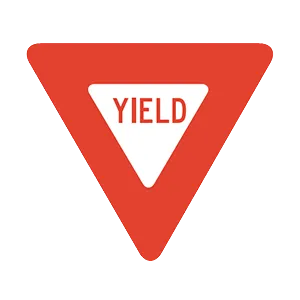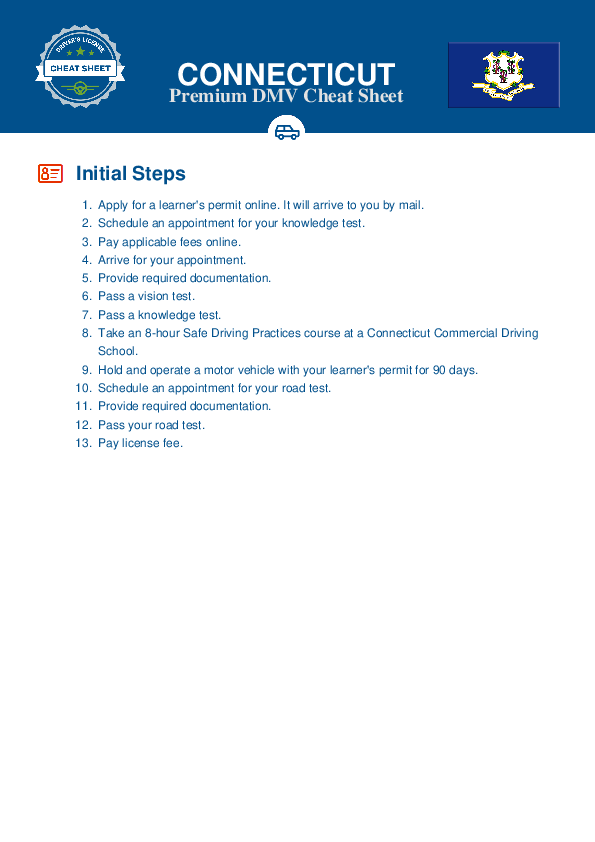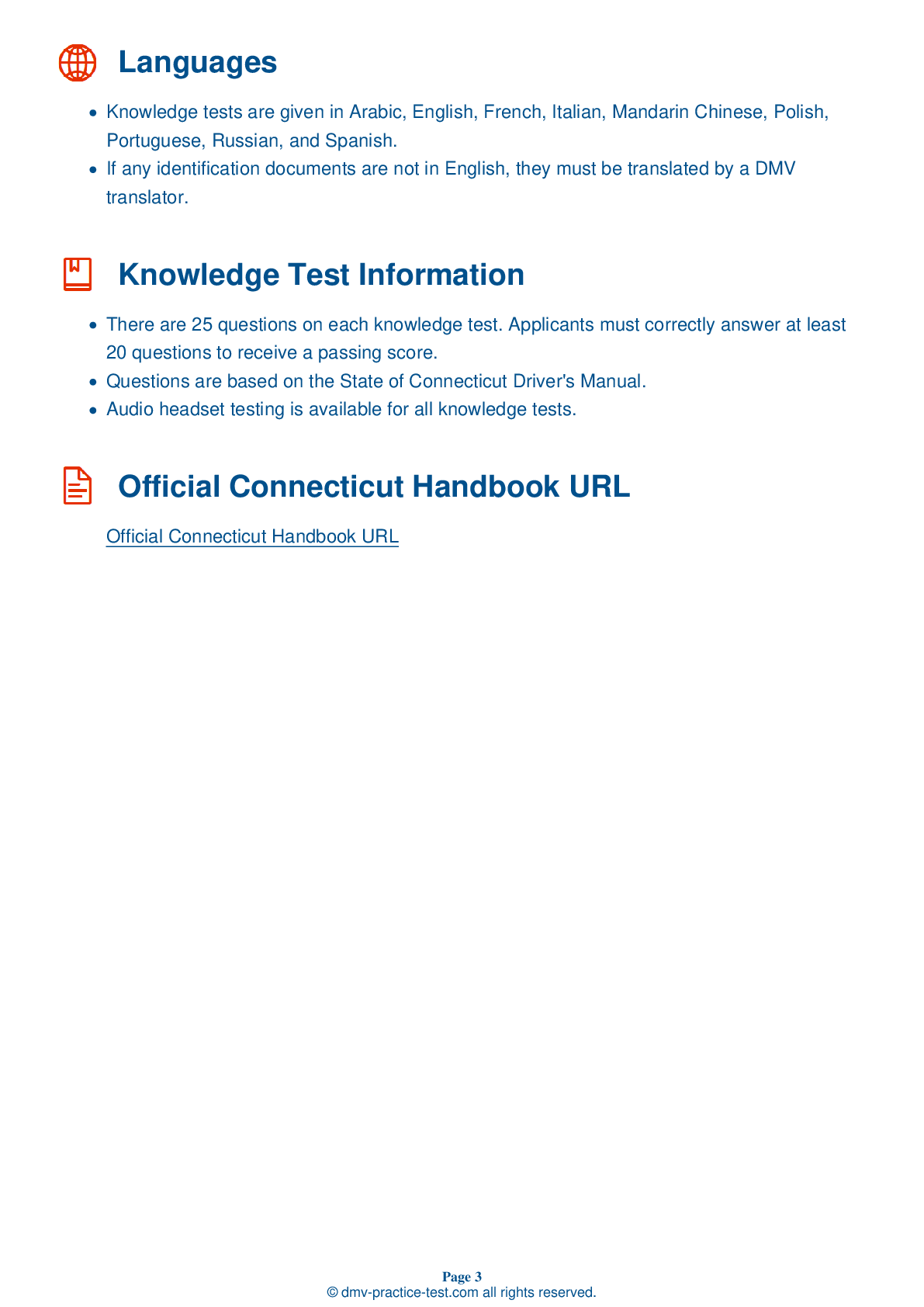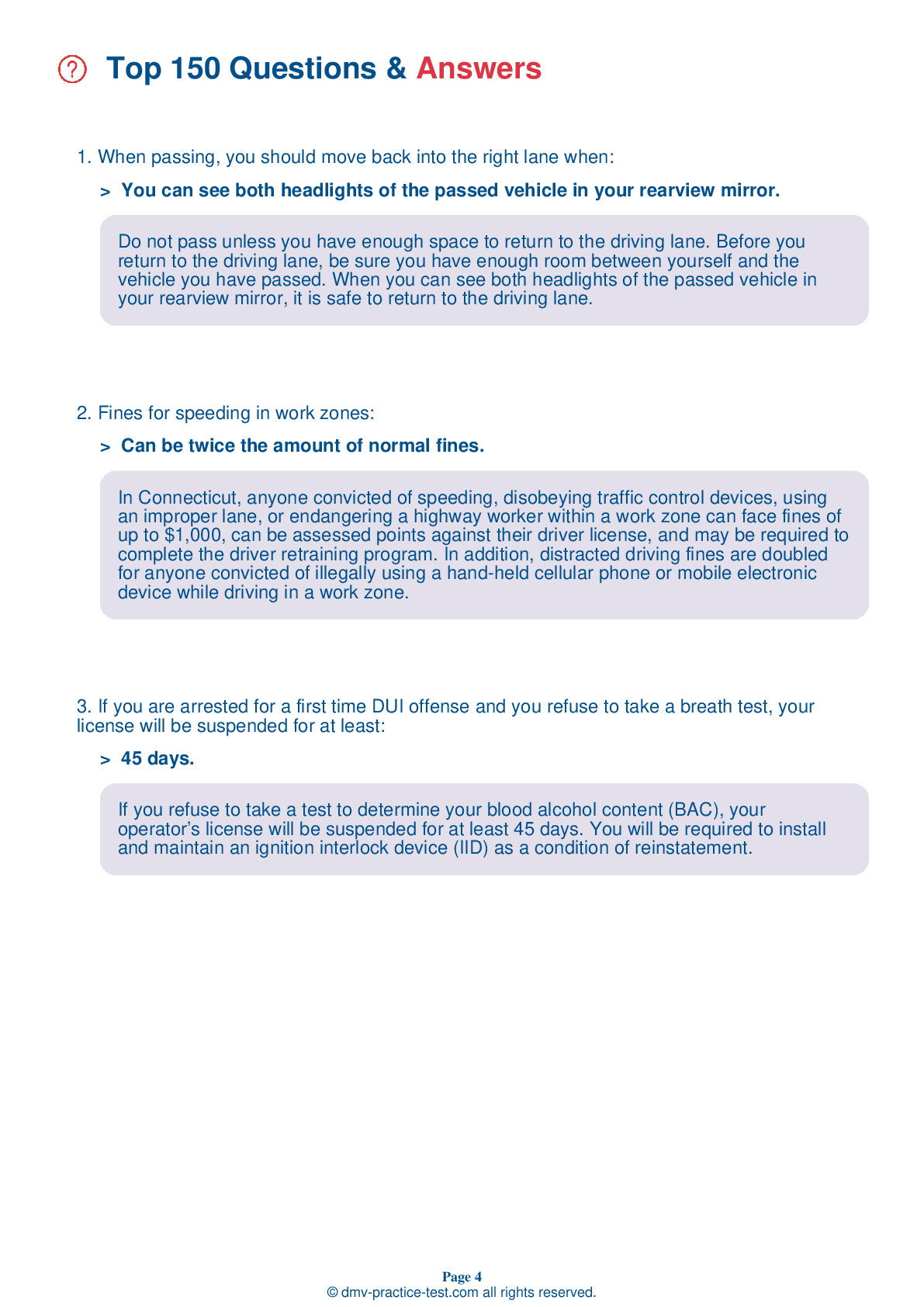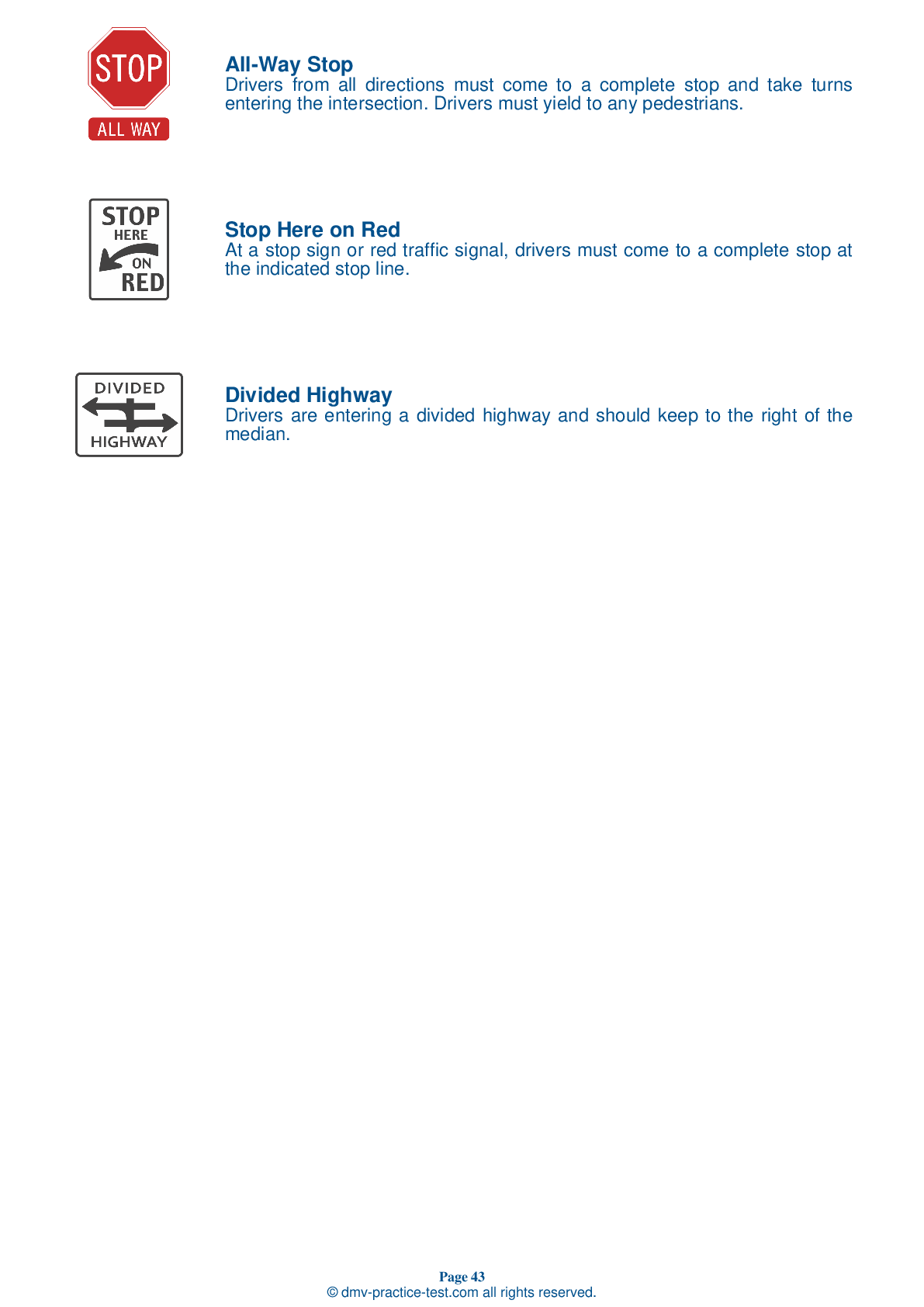FREE Connecticut DMV Practice Test #23
This set of Connecticut DMV practise tests was just updated for January 2025. It includes questions based on the Connecticut Driver Handbook's most essential traffic signs and regulations for 2025. Use actual questions that are very similar (often identical!) to the DMV driving permit test and driver's licence exam to study for the DMV driving permit test and driver's licence exam.
Each practise test question has a hint and explanation to assist you in remembering the concepts. The written component of the official DMV test will include questions about road rules, traffic signs, and driving statutes, as well as information from the Driver Handbook.
To achieve the required passing grade, you must correctly answer 20 of the 25 questions. Take our DMV practise exam to help you prepare for your Connecticut instruction permit or driver's licence.
The DMV exam is available in several languages.
Using any form of testing help will result in an automatic fail, and the DMV may take further action against your driver's licence, so avoid it.
1 . This sign means:
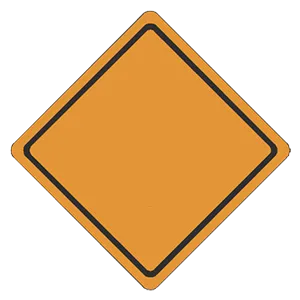
Diamond-shaped signs are used to warn of actual or possible hazards. The color orange is used for warning signs usually found in construction or maintenance areas.
2 . Which of the following factors affect an individual's absorption of alcohol?
Factors affecting a person's absorption of alcohol include the person's weight, their biological sex, the amount of food in their digestive tract, and the number of alcoholic beverages they have consumed. The only thing to do to remove alcohol from a person's system is to wait.
3 . This sign means:
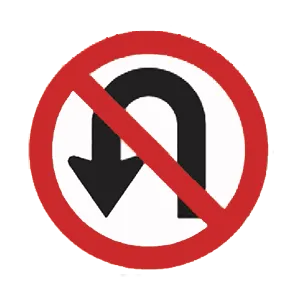
This sign indicates that U-turns are prohibited. You may see a sign like this at an intersection that commonly has oncoming traffic.
4 . This sign means:
